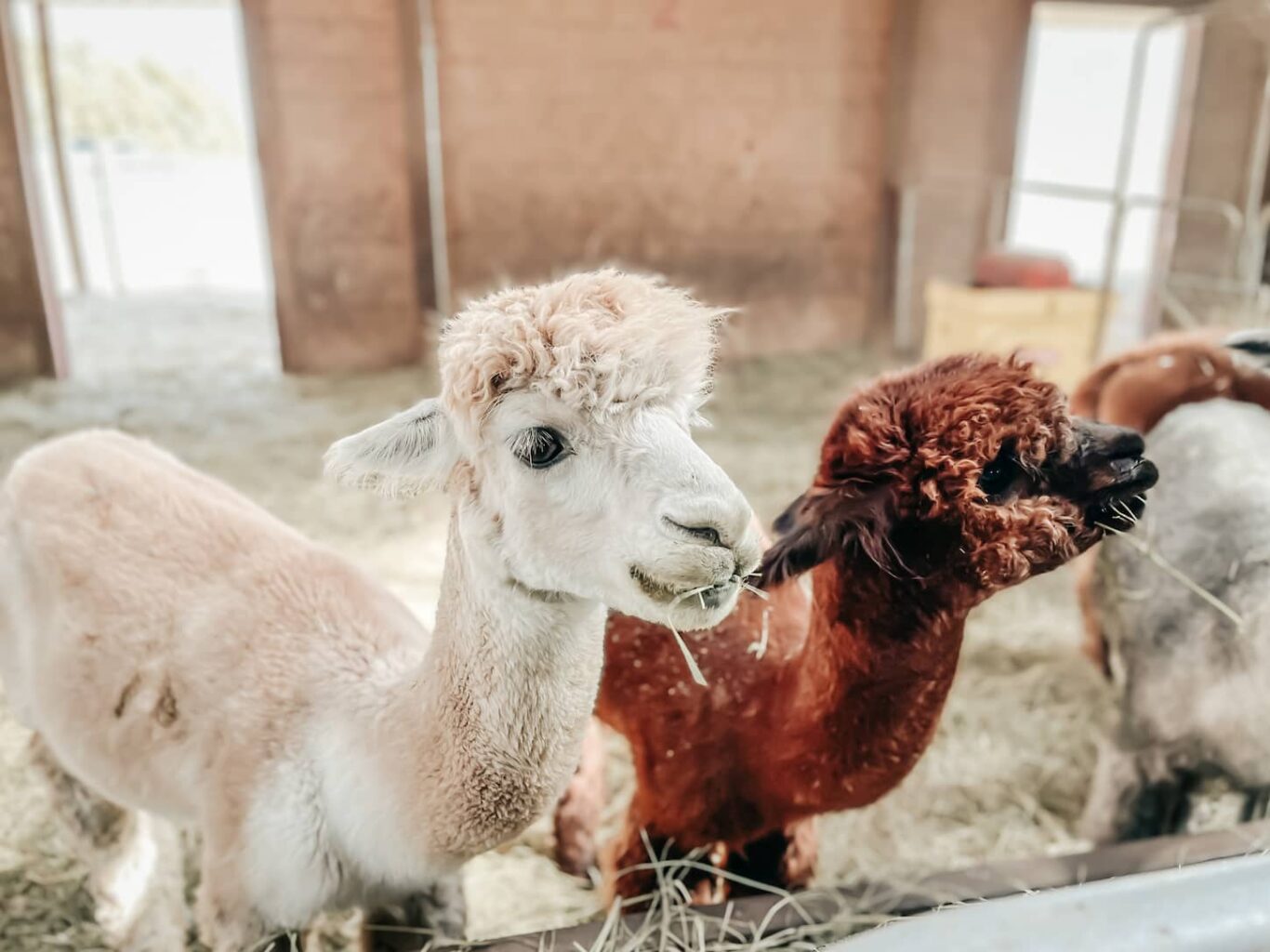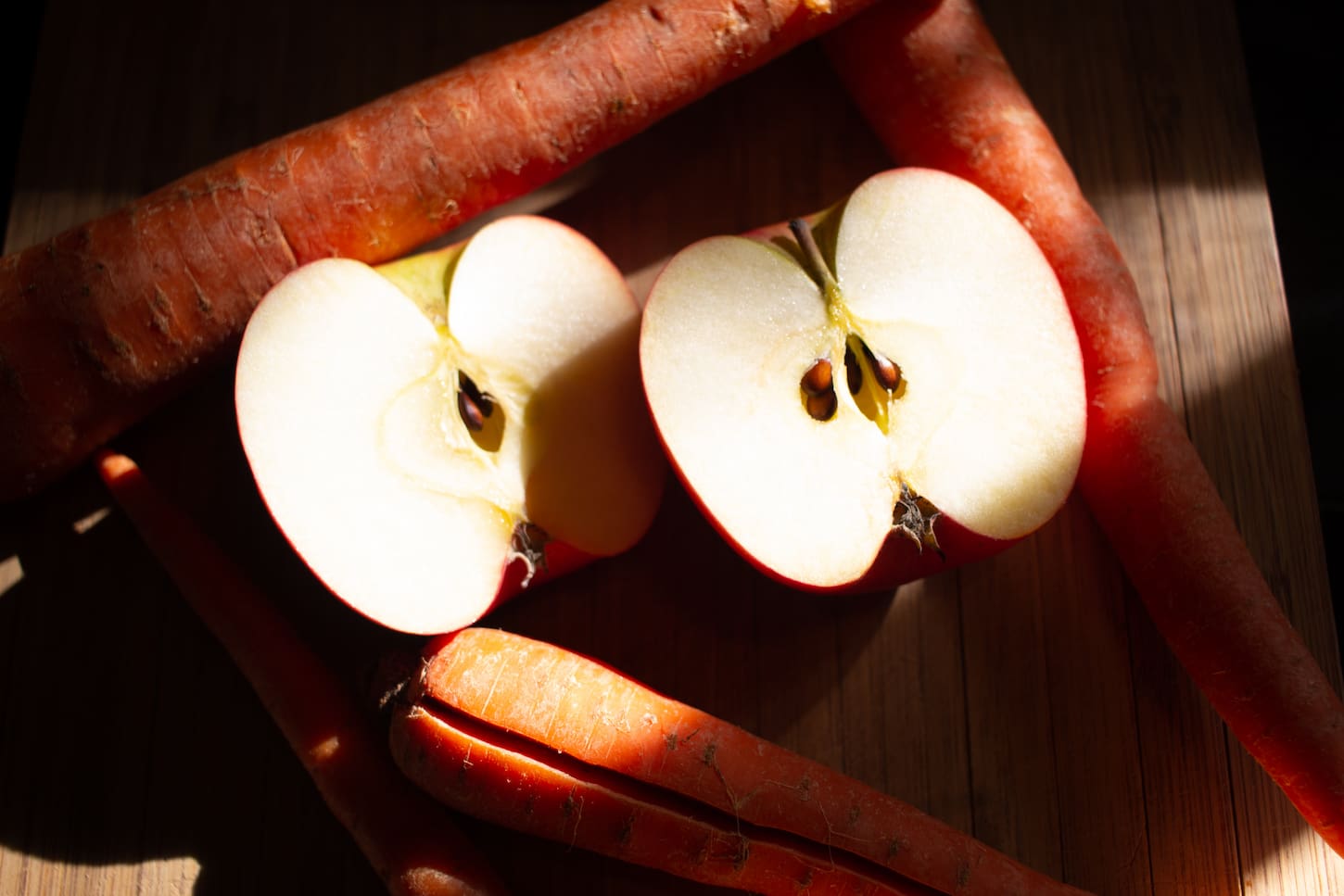Taking care of animals can be hard work. One of the best ways to keep them healthy, happy, and occupied is to create a diet full of yummy and wholesome treats. We’ve been doing research on how to curate the perfect diet for your llama, including foods they’ll love and what you should avoid.
Ideal llama treats include carrots, parsnips, celery, and sweet potatoes. Llamas also love fruits such as oranges, mangoes, bananas, watermelons, and apples. Llamas should avoid foods such as stone fruits and chocolates.
There are specific ways to prepare these foods to help your llama to chew and digest them. Llamas don’t require special, expensive foods or treats. In fact, llamas will benefit from having a diet similar to that of cows, sheep, and other members of the Camelidae family (like alpacas).
Treats make a great addition to an already balanced diet and can supplement a llama’s vitamin and mineral intake as well as provide enrichment.
Excited to get started on curating the perfect diet for your llamas? Don’t rush out to buy new treats just yet. Let’s discuss the details of llama dietary requirements, the types of foods that should be used, and how to prepare them!

What Foods Make a Great Treat for Llamas?
Llamas love fresh fruits and vegetables. This is not surprising since fresh fruits and vegetables are packed with nutrients and tons of flavor. However, if a llama is experiencing any adverse effects after consuming any of these fruits and vegetables, consult the veterinarian.
Additionally, consult a veterinarian if unsure about adding any of these treats to their diet. As their caretaker, proper precautions should be taken to keep them healthy and thriving.
The following vegetables make excellent treats for llamas
Carrots: High in Vitamins A, C, and B6, carrots are great for adding vitamins and minerals to their diets. Carrots also have Magnesium, Iron, Potassium, and Calcium.
Parsnips: Similar to carrots, parsnips are a root vegetable that is high in Calcium, Magnesium, Folate, and Fiber.
Sweet Potatoes: These sweet treats are rich in vitamins A, C, and E.
Celery: Celery is a great source of anti-oxidants and anti-inflammatories. Additionally, it is high in Fiber, Potassium, Calcium, and Vitamin K.
The following fruits make tasty llama treats
Oranges: It’s common knowledge that oranges are high in vitamin C and can help boost immune systems. They’re also a great source of Potassium and high in Fiber.
Mangoes: Mangoes are vibrant and exotic! They’re excellent for promoting heart health and strengthening bones.
Bananas: Bananas are famous for being good sources of potassium, but they’re also high in fiber, vitamins B6 and C, and anti-inflammatory properties.
Watermelons: Juicy, refreshing watermelons can aid in hydration during the summer months. Additionally, they’re packed with vitamins A, B6, and C.
Apples: An apple a day keeps the veterinarian away! Apples contain many nutrients such as Vitamins C, K, E, B1, and B6.
As with anything else in life, moderation is key! Many of these foods contain similar vitamins and minerals so be sure to monitor the quantities your llamas are consuming on a daily basis.

What Foods Should You Avoid Feeding Your Llama?
While llamas can eat a diverse range of fruits and vegetables, there are a few foods that they should steer clear of entirely. These foods can cause allergic reactions, and severe toxic reactions, and will compromise the overall health of your llama in the long run.
These foods include
- Stone Fruits (such as cherries or plums)
- Avocados
- Chocolates
- Potatoes
- Eggplants
- Lima Beans
- Peas
- Processed, sugary human foods
- Animal Products (llamas are herbivores)
Bear in mind that there may be foods that your llama is allergic to that aren’t included in this article. Always check with your veterinarian if unsure about the llama’s reaction to certain foods.
The veterinarian will be able to assess the llama’s diet based on their breed, age, gender, and living conditions. Better safe than sorry!
What Human Food Can Llamas Eat?
Fruits and vegetables are the only “human” foods that are fit for llamas to eat. Llamas cannot eat sugary human food, as a llama’s stomach is not designed to digest complex carbohydrates, high amounts of sugar, or starch.
Llamas are natural foragers and thrive when feeding on natural, green, leafy food, such as grass and plants.
So, don’t feed the llama any leftovers; this can cause an upset stomach at the very least. Fruits and vegetables are the only “human” foods that are fit for llamas to eat.
How Do You Make Llama Treats?
When preparing treats for llamas, always take care to make sure they don’t choke on their food. This means chopping up carrots, parsnips, and celery into small pieces. Sweet potatoes can be diced into small cubes, with the peel on or off.
Carrots, parsnips, and sweet potatoes can be chopped up and boiled to make warm, soft treats. This is ideal for colder days, and if your llama has trouble chewing on hard, raw food. Keeping llamas healthy includes taking care of their teeth.
When it comes to fruit, it’s best to simply chop the raw fruit into small chunks. This will reduce chewing time and prevent choking.

Can Llamas Eat Horse Treats?
Horse treats, such as fresh fruits or vegetables, are safe for a llama to consume in small amounts. Commercial horse treats may be safe as a rare treat, as horse treats are made for horses and their dietary requirements are different from llamas.
Foods that may be considered horse treats include apples and carrots. These are safe for llamas to eat as long as they are prepared correctly.
Horses have stronger jaws and teeth and are able to bite into these foods. Cut these treats into cubes to make them easier to eat and to prevent the llama from choking.
There are many foods that work as tasty, nutritious treats for a llama. These include carrots, parsnips, celery, sweet potatoes, oranges, mangoes, bananas, watermelons, and apples.
Be wary of other foods that your llama may be allergic to. This includes stone fruits, avocados, chocolate, potatoes, eggplants, lima beans, peas, and animal products. Additionally, avoid feeding your llama sugary human foods since they cannot digest starches.
If you find that your llama still isn’t receiving the right nutrition, please consult with a veterinarian to begin adding supplements to their diet. These usually come in the form of pellets and can be snuck in with their treats.

Key Takeaways and Next Steps
Llamas can make really great pets, but they need to be fed a nutritious diet. Feed them foods they are meant to eat like grasses, forbs, carrots, parsnips, celery, sweet potatoes, oranges, mangoes, bananas, watermelons, and apples.
Human food (that isn’t fresh fruits and vegetables) is generally not good for llamas. So, it’s a good idea to stick to what you know is good for them and play it safe.
In any case, here’s more we’ve written on what llamas can eat:
- What Do Alpacas And Llamas Eat?
- Can Alpacas And Llamas Eat Kudzu?
- How Much Water Do Alpacas And Llamas Drink A Day?
Each of those articles is a great resource, so make sure you check them all out!
Resources
Learning from your own experience is essential, but learning from others is also intelligent. These are the sources used in this article and our research to be more informed as homesteaders.
- “Are Alpacas and Llamas Ruminants?” Backyard Homestead HQ, 21 May 2021, backyardhomesteadhq.com/are-alpacas-and-llamas-ruminants/.
- Lee, April. “Can Llamas Eat Carrots.” Farmhouse Guide, 20 Feb. 2021, farmhouseguide.com/can-llamas-eat-carrots.
- The Open Sanctuary Project, Inc. “Things That Are Toxic To Llamas.” The Open Sanctuary Project, 14 Sept. 2021, opensanctuary.org/article/things-that-are-toxic-to-llamas.
- “What Do Alpacas And Llamas Eat?” Backyard Homestead HQ, 12 July 2021, backyardhomesteadhq.com/what-do-alpacas-and-llamas-eat/.
